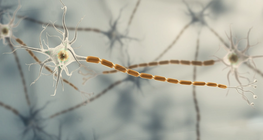Understanding the building blocks of the nervous system.
The nervous system: anatomy and function.
The peripheral nervous system consists of nerves and neuromuscular junctions outside the brain and spinal cord.
Our body is constantly receiving and processing information from the outside world through somatosensory system.
Motor tracts, motor neurons, and types of reflexes.
Visible electromagnetic radiation from the outside world is perceived by the visual system.
External stimuli are perceived and transmitted to the brain through specific sensory organs.
Sensing chemical stimuli from the outside world requires receptors in the olfactory and taste organs.
Sleeping interrupts the periods when we are awake.
The autonomic nervous system is responsible for maintaining the body's physiologic processes.
In intensive care units (ICUs), objective evaluation of consciousness is a crucial aspect of patient assessment.
Humans are homeotherms, meaning they regulate body temperature within a narrow range.
Assessing respiration and oxygenation in critically ill patients.
There are invasive, minimally invasive, and non-invasive methods of hemodynamic monitoring; all of them assess physiological processes to provide valuable diagnostic and therapeutic information.
The patient's general condition and level of consciousness are key factors.
Periodic vital sign measurement and monitoring are essential in the care and treatment of critically ill patients.
In artificial nutrition, specialized nutritional formulas are administered enterally in a patient who cannot feed on their own.
Monitoring with the elimination of stool and urine is a crucial aspect of nursing care for patients in critical condition.
Patient positioning to maintain the patient in a neutral body position.
Maintaining proper hygiene is a fundamental human need that contributes to overall well-being.





















